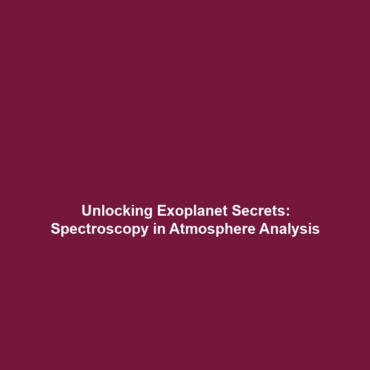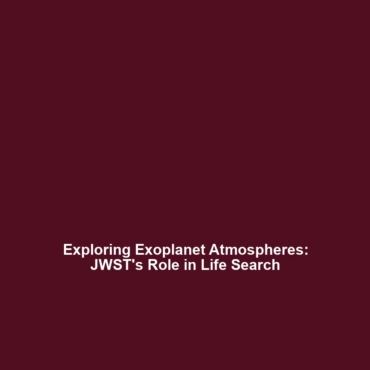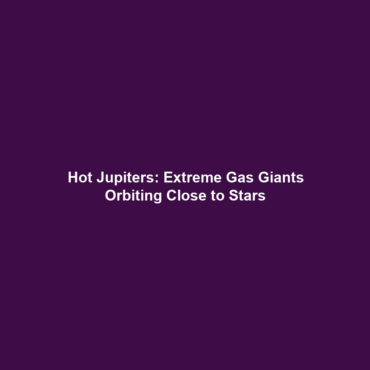Spectroscopy and Atmosphere Detection in Exoplanet Research
Introduction
Spectroscopy and atmosphere detection play a pivotal role in the journey of understanding exoplanets—planets that orbit stars outside our solar system. By analyzing the light that filters through an exoplanet’s atmosphere, scientists can uncover vital information about the planet’s composition, temperature, and potential habitability. This innovative method allows researchers to identify essential elements like water vapor, carbon dioxide, and methane, providing clues about the exoplanet’s potential for supporting life. Understanding these atmospheres not only enriches our knowledge of planetary systems but also broadens our perspective on the universe.
Key Concepts of Spectroscopy
What is Spectroscopy?
Spectroscopy is a technique used to measure the light spectrum emitted or absorbed by substances. When light passes through an exoplanet’s atmosphere, it interacts with different molecules, each leaving a unique spectral signature. This helps scientists determine the chemical makeup of the exoplanet’s atmosphere.
How Atmosphere Detection Works
During the transit of an exoplanet across its host star, some of the star’s light passes through the planet’s atmosphere. By capturing this light with sensitive instruments, researchers can analyze the absorption lines in the spectrum. These lines correspond to the specific wavelengths of light absorbed by various atmospheric components, revealing the presence and concentration of chemicals.
Applications and Real-World Uses
The application of spektroskopi and atmosphere detection is crucial in the study of exoplanets. Here are a few significant real-world applications:
- Identifying Habitable Exoplanets: Researchers can evaluate which exoplanets may have conditions favorable for life.
- Studying Planetary Formation: Analyzing the atmospheric composition helps in understanding how planets form and evolve.
- Monitoring Atmospheric Changes: Continuous observation can track changes over time, offering insights into planetary atmospheres.
Current Challenges
While spectroscopy offers valuable insights, several challenges persist in this field:
- Low Signal-to-Noise Ratio: The faint light from distant exoplanets can make it difficult to discern patterns.
- Atmospheric Interference: Earth’s atmosphere can interfere with observational data unless conducted from space.
- Limitations of Current Technologies: Many existing instruments are not sensitive enough to detect subtle spectral features.
Future Research and Innovations
Looking ahead, advancements in technology promise significant strides in spectroscopy and atmosphere detection:
- Next-Generation Space Telescopes: Future telescopes, like the James Webb Space Telescope, aim to provide unprecedented details of exoplanet atmospheres.
- Machine Learning Techniques: New algorithms may help in the analysis and interpretation of complex spectral data more accurately.
- Enhanced Detector Technologies: Innovations in detector sensitivities can lead to better observations of distant worlds.
Conclusion
The analysis of light passing through exoplanet atmospheres via spectroscopy represents a powerful tool in the quest to understand the cosmos. As scientists continue to refine these techniques and overcome current challenges, we move closer to unraveling the mysteries of distant worlds. For those interested in learning more about exoplanets and their atmospheres, further reading can be found on our exoplanets page and our section on spectroscopy techniques.



